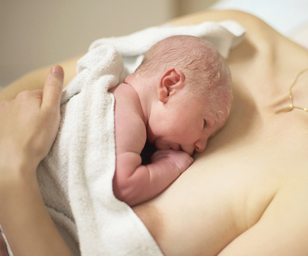In this article, you will find:
Physical effects after birth
After the huge effort of giving birth, it's common to have a physical reaction. Many women experience uncontrollable shaking or shivering, and some feel nauseous and may even vomit. In addition to your physical reaction, you are also likely to be feeling overwhelmed and emotional. Once you and your baby have been given the all clear, you should be given some quiet time alone to get to know each other.
A postpartum hemorrhage describes the loss of up to 1 pint (500 ml) of blood after the delivery. This is often associated with a retained placenta, when the placenta remains in the uterus for a prolonged period of time, which is most likely to occur during a natural delivery of the placenta. It can also occur after an assisted forceps delivery; after a prolonged labor; or following a cesarean. Improvements in the treatment of this condition with antibiotics and blood transfusions has meant that the incidence of complications following a hemorrhage has fallen considerably over the years.

Skin-to-skin contact with your newborn baby will help keep her warm – newborns don't have very good temperature control – and will also help the two of you start bonding.
